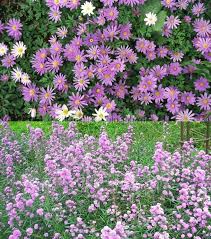
Flowers hold a special place in society, playing multifaceted roles that extend beyond mere aesthetics. From cultural symbolism to addressing social issues, flowers have a profound impact on various aspects of human life.
**1. Cultural Significance:**
Flowers have deep cultural significance across different societies and traditions. They symbolize beauty, purity, love, and remembrance in ceremonies, rituals, and everyday life. For example, cherry blossoms are revered in Japan, representing the transient nature of life and renewal during Hanami (flower viewing) festivals.
**2. Expressions of Emotion:**
Flowers are powerful communicators of emotions. They convey sentiments of love, sympathy, celebration, and apology through their colors, scents, and arrangements. Giving and receiving flowers is a universal gesture that transcends language barriers, expressing heartfelt emotions in various social contexts.
**3. Environmental Advocacy:**
Flowers play a crucial role in environmental advocacy and awareness. They are integral to sustainable gardening practices, promoting biodiversity, and attracting pollinators essential for ecosystem health. Community initiatives often focus on planting native flowers to conserve local flora and support wildlife habitats.
**4. Healing and Well-Being:**
Flowers contribute to emotional well-being and mental health. Studies show that exposure to floral environments reduces stress, anxiety, and depression while promoting relaxation and positive moods. Floral therapies, such as aromatherapy and flower essences, harness the therapeutic properties of flowers for holistic healing.
**5. Social and Economic Empowerment:**
Flower cultivation and trade empower communities, particularly women, in developing regions. Floral industries create employment opportunities, generate income, and enhance socio-economic stability. Fair trade practices promote ethical sourcing and support sustainable livelihoods for flower farmers.
**6. Addressing Social Issues:**
Flowers are used as symbols of solidarity and activism in addressing social issues. For instance, red poppies symbolize remembrance and support for veterans and war victims. Flowers are also employed in public art installations and protests to raise awareness about environmental conservation and social justice.
**7. Commemoration and Celebration:**
Flowers mark significant milestones and events in society. They adorn weddings, funerals, graduations, and religious ceremonies, symbolizing transitions and honoring traditions. Floral displays at public spaces and cultural festivals foster community cohesion and celebrate shared heritage.
**8. Bridging Divides:**
Flowers have the power to bridge divides and foster inclusivity. Floral collaborations between diverse communities promote cultural exchange, dialogue, and understanding. Community gardens and urban greening initiatives promote social cohesion by cultivating shared spaces for interaction and engagement.
**9. Education and Awareness:**
Flowers serve as educational tools to promote botanical knowledge and environmental stewardship. Botanical gardens, nature reserves, and educational programs use flowers to engage the public in conservation efforts and ecological awareness, nurturing a sense of environmental responsibility.
**10. Resilience and Hope:**
In times of adversity, flowers symbolize resilience and hope. Floral tributes following natural disasters or humanitarian crises convey solidarity and support. Community-led initiatives to revive green spaces with flowers instill optimism and promote recovery.
The multifaceted roles of flowers in society underscore their significance beyond ornamental beauty, emphasizing their contributions to cultural heritage, social dynamics, and collective well-being.
Flowers play diverse and essential roles in society, addressing various social issues and contributing to community well-being and cohesion.
**11. Cultural Identity and Diversity:**
Flowers reflect cultural identity and diversity, embodying the essence of local traditions and customs. They are featured in indigenous rituals, folk art, and storytelling, preserving cultural heritage and fostering intergenerational connections.
**12. Social Rituals and Traditions:**
Flowers enrich social rituals and traditions, enhancing the aesthetics and symbolism of ceremonies. They adorn festive celebrations, religious observances, and rites of passage, reinforcing social bonds and strengthening collective identity.
**13. Environmental Conservation:**
Flowers contribute to environmental conservation by promoting sustainable practices and habitat restoration. Wildflower conservation projects protect endangered species and promote biodiversity, safeguarding ecosystems for future generations.
**14. Community Beautification:**
Flowers enhance urban landscapes and public spaces, promoting civic pride and beautification. Community-led gardening initiatives and floral displays transform neglected areas into vibrant hubs, fostering a sense of ownership and revitalizing neighborhoods.
**15. Social Healing and Therapy:**
Flowers serve as therapeutic tools in social healing and trauma recovery. Community gardens and horticultural therapy programs offer solace and promote resilience among vulnerable populations, including survivors of violence and individuals experiencing homelessness.
**16. Advocacy for Social Justice:**
Flowers are used as symbols of advocacy for social justice and human rights. Floral installations raise awareness about pressing issues such as gender equality, racial justice, and LGBTQ+ rights, sparking conversations and driving societal change.
**17. Food Security and Nutrition:**
Edible flowers contribute to food security and nutrition, enriching culinary traditions and diversifying diets. Community gardens incorporate edible flowers, promoting sustainable agriculture and empowering communities to cultivate nutritious, locally sourced foods.
**18. Interdisciplinary Collaboration:**
Flowers foster interdisciplinary collaborations across art, science, and social disciplines. Floral art exhibitions, scientific research on floral biodiversity, and community engagement projects bridge disciplinary boundaries, fostering innovation and creativity.
**19. Education and Skill Development:**
Flowers facilitate experiential learning and skill development. School gardening programs introduce children to botany and ecology, fostering environmental stewardship and hands-on learning. Floral design workshops promote artistic expression and entrepreneurial skills.
**20. Collective Resilience and Solidarity:**
Flowers symbolize collective resilience and solidarity during times of adversity. Floral tributes and memorials unite communities in mourning and commemoration, offering solace and promoting healing in the face of tragedy.
By recognizing the multifaceted roles of flowers in addressing social issues and shaping community dynamics, we celebrate their enduring significance as agents of positive change and catalysts for social transformation.
—
This section explores the broader impact of flowers in addressing social issues, promoting environmental conservation, fostering community engagement, and advocating for social justice. Flowers serve as catalysts for collective action and symbolize hope, resilience, and unity in addressing complex societal challenges.










